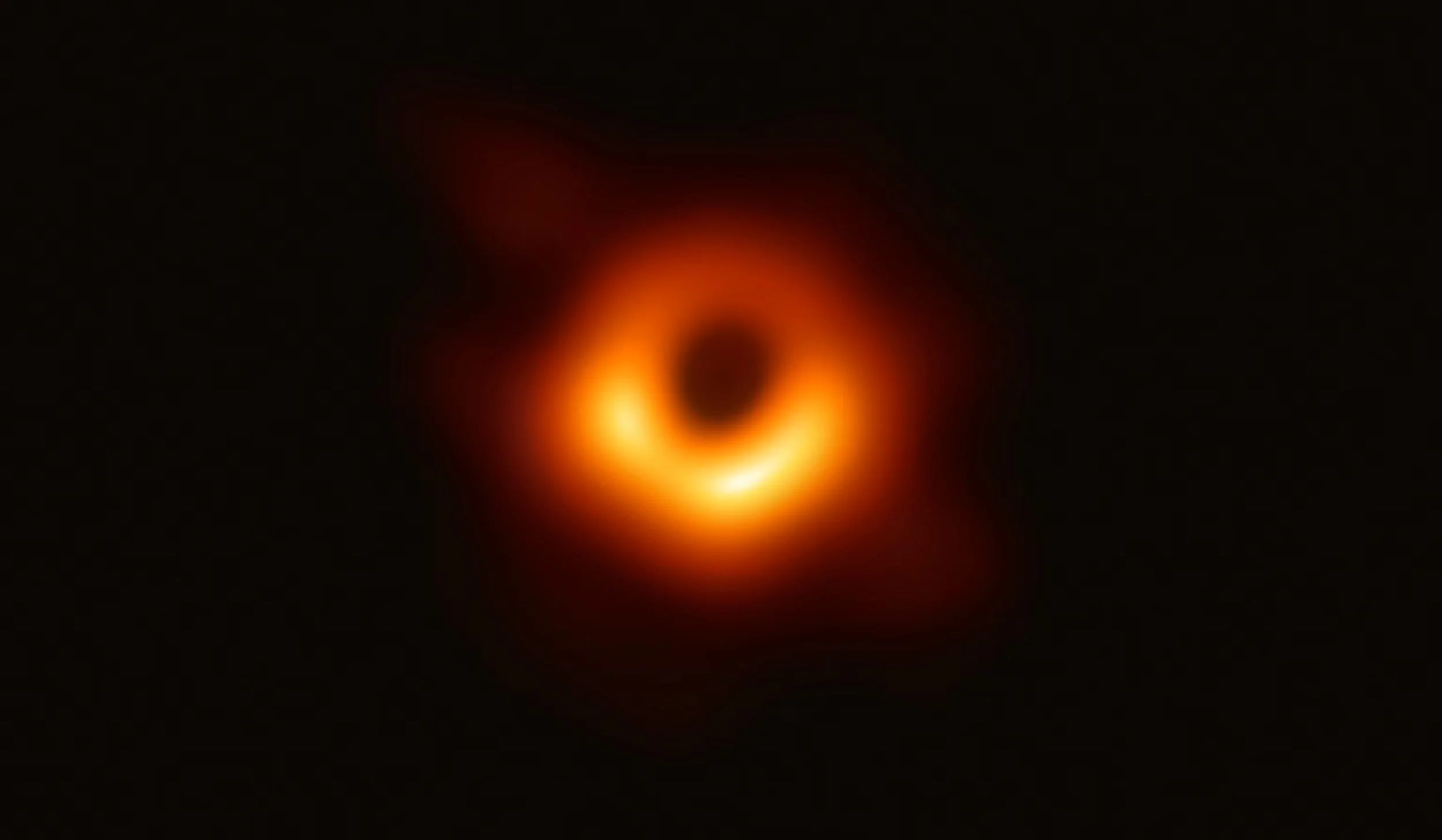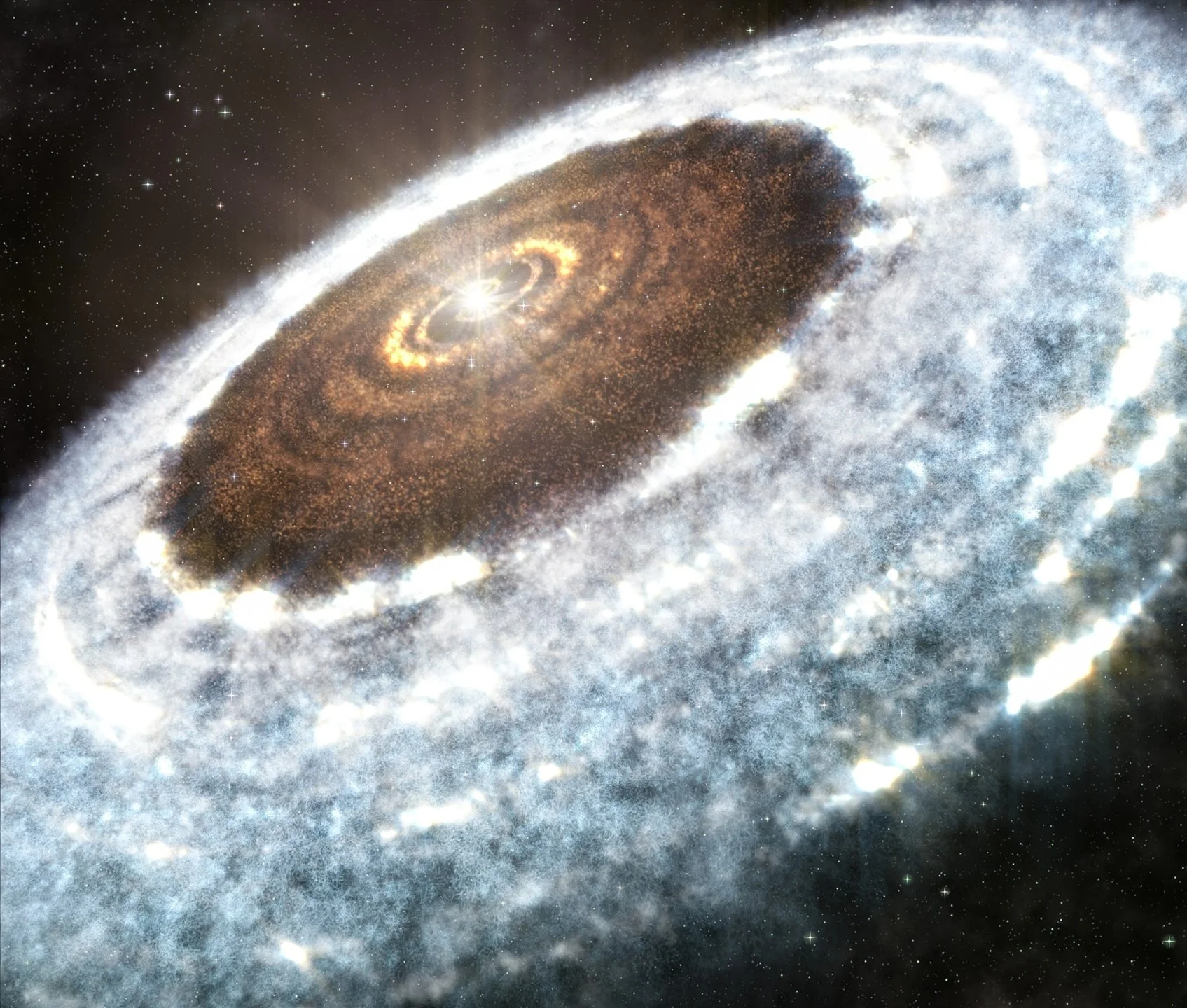It may sound like the plot of a sci-fi film: a tiny spacecraft, no heavier than a paperclip, fired through space by a powerful laser, headed toward a mysterious black hole.
But for Cosimo Bambi, an Italian cosmologist at Fudan University in China, this idea isn’t so far off. He recently outlined a step-by-step plan for this kind of mission, raising the possibility that, within our lifetimes, humanity might be able to probe the universe’s greatest mysteries directly.
While the challenges are significant, astrophysicist Cosimo Bambi believes that sending a tiny spacecraft to a nearby black hole is within the realm of possibility. - (Image Credit: Event Horizon Telescope Collaboration)
The Hunt for a Neighbouring Black Hole
Before launching any spacecraft, scientists first have to find a target. According to Bambi, previous research on how stars evolve suggests there could be a black hole just 20 to 25 light-years from Earth. But pinpointing its location is no small feat. Black holes are called “black” for a reason—they don’t emit or reflect light, making them nearly invisible to even the best telescopes. Instead, astronomers look for clues: how a black hole tugs on neighbouring stars or bends light passing by.
“There have been new techniques to discover black holes,” says Bambi. “I think it’s reasonable to expect we could find a nearby one within the next decade.” That means the hunt is already underway.
How Do we reach a Black Hole in a Lifetime
Finding one is nearby is one thing, but getting to the black hole is another massive challenge. Traditional rockets, with their heavy fuel tanks, are far too slow for such a distant journey. The answer, Bambi says, could be a “nanocraft”—a probe weighing just a few grams, consisting of a microchip and an ultra-thin “light sail.” Lasers on Earth would fire photons at the sail, pushing the tiny spacecraft to nearly a third the speed of light.
If all goes according to plan, this pocket-sized probe could reach a black hole 20 to 25 light-years away in about 70 years. The information it collects would take another 20 years to reach us, so the entire mission could last between 80 and 100 years—just about a human lifetime.
Interesting article: How large is the universe? - (Universal-Sci)
What Could We Discover Near a Black Hole?
Once the nanocraft arrives, it could help answer some of science’s most debated questions. For example: Is a black hole’s event horizon truly the point of no return? Do the laws of physics change near a black hole’s edge? And does Einstein’s general relativity stand up under the universe’s most extreme conditions?
Of course, the road ahead is steep. “We don’t have the technology now,” says Bambi. “But in 20 or 30 years, we might.” Even the lasers needed to propel the nanocraft would cost about a trillion euros today. Still, Bambi is optimistic that costs will drop and technology will advance.
“It may sound really crazy, and in a sense closer to science fiction,” Bambi adds. “But people said we’d never detect gravitational waves because they’re too weak. We did—100 years later. People thought we’d never observe the shadows of black holes. Now, 50 years later, we have images of two.”
As scientists continue to dream (and plan) the line between fiction and reality keeps getting thinner. If you are interested in reading more be sure to check the article published in the peer reviewed journal iScience, listed below this article
Sources, further reading and more interesting articles on the subject of Space & Exploration:
An interstellar mission to test astrophysical black holes - (iScience)
Cruising at 20% of the speed of light has some inherent risks - (Universal-Sci)
How long does it take to get the asteroid belt? - (Universal-Sci)
How big is the universe? - (Universal-Sci)
Is space infinite? We asked 5 experts - (Universal-Sci)
Too busy to follow science news during the week? - Consider subscribing to our (free) newsletter - (Universal-Sci Weekly) - and get the 5 most interesting science articles of the week in your inbox
FEATURED ARTICLES:






